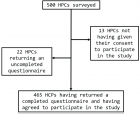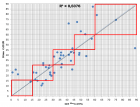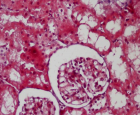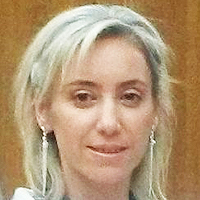Abstract
Research Article
Usefulness of salivary cortisol as a marker of secondary adrenal insufficiency in paediatric patients
Laura Capdevila, Ariadna Borràs, Eugenio Berlanga, Judith Sánchez- Manubens, Josefa Rivera and Raquel Corripio*
Published: 07 April, 2021 | Volume 5 - Issue 1 | Pages: 024-028
Background: The main cause of adrenal insufficiency (AI) in paediatric patients is prolonged treatment with corticosteroids. Determination of plasma cortisol (PC) during ACTH test is the most used adrenal function indicator in clinical practice. However, determination of salivary cortisol (SC), a simple test especially useful in children in order to avoid invasive procedures, can be used as an alternative technique for the diagnosis of adrenal disease.
Methods: A two-year prospective study (January 2014-January 2016) in paediatric patients (2-18 years of age) treated with corticosteroids for more than fifteen days, who were investigated for suspected AI. Low-dose ACTH test was used to determine adrenal function and samples for SC and PC were obtained simultaneously in basal situation and during the test (at 30, 60 and 90 minutes).
Results: 230 samples (118 PC-112 SC) of 30 studies belonging to 20 patients (4 males), mean age 10.93 years ± 3.69 SD. Pearson’s correlation coefficient showed a positive correlation between PC and SC (r = 0.618, p < 0.001). All the studies with some determination of PC higher than 18 μg/dL (n = 8) had a SC peak higher than 0.61 μg/dL with a specificity of 66.67% and a sensitivity of 93.94% (ROC analysis).
Conclusion: Measurement of SC is a less invasive, easier and quicker test than PC to measure plasma free cortisol levels. In our study, a SC peak in low-dose ACTH test higher than 0.61 μg/dL was able to discriminate patients without AI, and proved to be a useful tool in the initial evaluation of children with suspected AI.
Introduction
The activation of the hypothalamic-pituitary-adrenal axis in response to critical illness and the resulting release of cortisol from the adrenal cortex are essential to stress adaptation. Adrenal insufficiency (AI) is described as the inability of adrenal glands to produce an appropriate hormonal secretion not only under stress but also in basal situation. Therefore, a low baseline plasma cortisol (PC) (< 5 μg/dL) and a poor cortisol response to stimulation with exogenous adrenocorticotropic hormone (peak < 18 μg/dL) are some of the defining criteria of this condition [1,2]. It is well known that the main cause of AI in paediatric patients is prolonged treatment with exogenous corticosteroids, which is an iatrogenic cause derived from the increasing complexity of paediatric pathologies and the increased use of prolonged high-dose corticosteroid therapy.
In clinical practice, adrenal function is usually assessed by the total PC (determined by low-dose ACTH test). This implies the placement of a vascular access which is often a traumatic experience for children.
PC includes protein-bound fraction and serum-free cortisol. The latter constitutes the biologically active form of the hormone and is responsible for glucocorticoid activity on peripheral organs. Most of the circulating cortisol is bound to plasma proteins (over 90%), such as cortisol-binding globulin (CBG) and albumin, whereas only about 10% of circulating cortisol is free. Hence, the measurement of plasma-free cortisol level has been considered more representative of adrenal function (especially in critically ill adults and children) [1,2], because some conditions, such as hypoalbuminaemia or hypoproteinaemia (frequent in critically ill patients or in patients with cirrhosis), may lead to misinterpretation of adrenal function with an overestimation of the prevalence of AI. But the direct measurement of free PC is a laboratory-dependent and time-consuming procedure that is not available for routine use. Salivary cortisol (SC) is one of the several indirect methods available to determine free PC [3], as SC levels accurately reflect free PC [4] even in cases of hypoalbuminaemia or CBG abnormality [1,5]. For this reason, in the last years, this technique (SC) has been introduced as a non-invasive tool in the diagnosis of adrenal cortical disorders, for its simplicity and applicability in the paediatric population. However, few studies to date have evaluated the usefulness of SC as a diagnostic method in children with AI. No interactions between exogenous corticoids and SC have been described [6].
The aim of the present study was to assess the usefulness of determining salivary cortisol levels as a diagnostic tool in children with suspected secondary iatrogenic AI.
Read Full Article HTML DOI: 10.29328/journal.acem.1001020 Cite this Article Read Full Article PDF
Keywords:
Salivary cortisol; Adrenal insufficiency; Children
References
- Balbão VM, Costa MM, Castro M, Carlotti AP. Evaluation of adrenal function in critically ill children. Clin Endocrinol (Oxf). 2014; 81: 559-565. PubMed: https://pubmed.ncbi.nlm.nih.gov/24588209/
- Elbuken G, Tanriverdi F, Karaca Z, Kula M, Gokahmetoglu S, et al. Comparison of salivary and calculated free cortisol levels during low and standard dose of ACTH stimulation tests in healthy volunteers. Endocrine. 2015; 48: 439-443. PubMed: https://pubmed.ncbi.nlm.nih.gov/25115637/
- Chiappin S, Antonelli G, Gatti R, De Palo EF. Saliva specimen: a new laboratory tool for diagnostic and basic investigation. Clin Chim Acta. 2007; 383: 30-40. PubMed: https://pubmed.ncbi.nlm.nih.gov/17512510/
- Lewis JG. Steroid analysis in saliva: an overview. Clin Biochem Rev. 2006; 27: 139-146. PubMed: https://pubmed.ncbi.nlm.nih.gov/17268582/
- Arafah BM, Nishiyama FJ, Tlaygeh H, Hejal R. Measurement of salivary cortisol concentration in the assessment of adrenal function in critically ill subjects: a surrogate marker of the circulating free cortisol. J Clin Endocrinol Metab. 2007; 92: 2965-2971. PubMed: https://pubmed.ncbi.nlm.nih.gov/17535998/
- Törnhage CJ. Salivary cortisol for assessment of hypothalamic-pituitary-adrenal axis function. Neuroimmunomodulation. 2009; 16: 284-289. PubMed: https://pubmed.ncbi.nlm.nih.gov/19571589/
- Jessop DS, Turner-Cobb JM. Measurement and meaning of salivary cortisol: a focus on health and disease in children. Stress. 2008; 11: 1-14. PubMed: https://pubmed.ncbi.nlm.nih.gov/17853059/
- Cetinkaya S, Ozon A, Yordam N. Diagnostic value of salivary cortisol in children with abnormal adrenal cortex functions. Horm Res. 2007; 67: 301-306. PubMed: https://pubmed.ncbi.nlm.nih.gov/17337901/
- Marcus-Perlman Y, Tordjman K, Greenman Y, Limor R, Shenkerman G, Osher E, et al. Low-dose ACTH (1 microg) salivary test: a potential alternative to the classical blood test. Clin Endocrinol (Oxf). 2006;64: 215-218. PubMed: https://pubmed.ncbi.nlm.nih.gov/16430723/
- Galbois A, Rudler M, Massard J, Fulla Y, Bennani A, et al. Assessment of adrenal function in cirrhotic patients: salivary cortisol should be preferred. J Hepatol. 2010; 52: 839-845. PubMed: https://pubmed.ncbi.nlm.nih.gov/20385427/
- Maguire AM, Cowell CT. Salivary cortisol to assess the hypothalamic-pituitary-adrenal axis in healthy children under 3 years old. J Pediatr (Rio J). 2007; 83: 383-384. PubMed: https://pubmed.ncbi.nlm.nih.gov/17676242/
- Tryphonopoulos PD, Letourneau N, Azar R. Approaches to salivary cortisol collection and analysis in infants. Biol Res Nurs. 2014; 16: 398-408. PubMed: https://pubmed.ncbi.nlm.nih.gov/24136995/
- Hanrahan K, McCarthy AM, Kleiber C, Lutgendorf S, Tsalikian E. Strategies for salivary cortisol collection and analysis in research with children. Appl Nurs Res. 2006; 19: 95-101. PubMed: https://pubmed.ncbi.nlm.nih.gov/16728293/
- Vining RF, McGinley RA. The measurement of hormones in saliva: possibilities and pitfalls. J Steroid Biochem. 1987; 27: 81-94. PubMed: https://pubmed.ncbi.nlm.nih.gov/3320544/
- Cevada T, Vasques PE, Moraes H, Deslandes A. Salivary cortisol levels in athletes and nonathletes: a systematic review. Horm Metab Res. 2014; 46: 905-910. PubMed: https://pubmed.ncbi.nlm.nih.gov/25230328/
- Aguilar Cordero MJ, Sánchez López AM, Mur Villar N, García García I, Rodríguez López MA, et al. [Salivary cortisol as an indicator of physological stress in children and adults; a systematic review]. Nutr Hosp. 2014; 29: 960-968. PubMed: https://pubmed.ncbi.nlm.nih.gov/24951973/
- Maas C, Ringwald C, Weber K, Engel C, Poets CF, et al. Relationship of salivary and plasma cortisol levels in preterm infants: results of a prospective observational study and systematic review of the literature. Neonatology. 2014; 105: 312-318. PubMed: https://pubmed.ncbi.nlm.nih.gov/24603497/
- Raff H, Raff JL, Findling JW. Late-night salivary cortisol as a screening test for Cushing's syndrome. J Clin Endocrinol Metab. 1998; 83: 2681-2686. PubMed: https://pubmed.ncbi.nlm.nih.gov/9709931/
- Arregger AL, Cardoso EM, Tumilasci O, Contreras LN. Diagnostic value of salivary cortisol in end stage renal disease. Steroids. 2008; 73: 77-82. PubMed: https://pubmed.ncbi.nlm.nih.gov/17945323/
- Doi SA, Clark J, Russell AW. Concordance of the late night salivary cortisol in patients with Cushing's syndrome and elevated urine-free cortisol. Endocrine. 2013; 43: 327-333. PubMed: https://pubmed.ncbi.nlm.nih.gov/23238876/
- Elamin MB, Murad MH, Mullan R, Erickson D, Harris K, et al. Accuracy of diagnostic tests for Cushing's syndrome: a systematic review and metaanalyses. J Clin Endocrinol Metab. 2008; 93: 1553-1562. PubMed: https://pubmed.ncbi.nlm.nih.gov/18334594/
- le Roux CW, Chapman GA, Kong WM, Dhillo WS, Jones J, et al. Free cortisol index is better than serum total cortisol in determining hypothalamic-pituitary-adrenal status in patients undergoing surgery. J Clin Endocrinol Metab. 2003; 88: 2045-2048. PubMed: https://pubmed.ncbi.nlm.nih.gov/12727952/
- Poomthavorn P, Lertbunrian R, Preutthipan A, Sriphrapradang A, Khlairit P, et al. Serum free cortisol index, free cortisol, and total cortisol in critically ill children. Intensive Care Med. 2009; 35: 1281-1285. PubMed: https://pubmed.ncbi.nlm.nih.gov/19352620/
Figures:
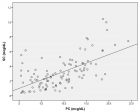
Figure 1
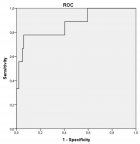
Figure 2
Similar Articles
-
Parathyroid Functions in Thalassemia Major PatientsAyfer Gözü Pirinççioğlu*,Deniz Gökalp,Murat Söker. Parathyroid Functions in Thalassemia Major Patients. . 2017 doi: 10.29328/journal.hcem.1001003; 1: 015-019
-
Diagnostic imaging in congenital adrenal hyperplasia – how does it help?Gul Bano*,Claudette Phillips,Sarah Tang,Anup Sharma,Nigel Beharry. Diagnostic imaging in congenital adrenal hyperplasia – how does it help?. . 2020 doi: 10.29328/journal.acem.1001013; 4: 007-010
-
Evaluation of endothelial function in obese children and adolescentsHacer Efnan Melek,Ayça Törel Ergür*,Gökçe Kaan Ataç. Evaluation of endothelial function in obese children and adolescents. . 2021 doi: 10.29328/journal.acem.1001019; 5: 014-023
-
Usefulness of salivary cortisol as a marker of secondary adrenal insufficiency in paediatric patientsLaura Capdevila,Ariadna Borràs,Eugenio Berlanga,Judith Sánchez- Manubens,Josefa Rivera,Raquel Corripio*. Usefulness of salivary cortisol as a marker of secondary adrenal insufficiency in paediatric patients. . 2021 doi: 10.29328/journal.acem.1001020; 5: 024-028
-
Physical Performance in the Overweight/Obesity Children Evaluation and RehabilitationCristina Popescu, Mircea-Sebastian Șerbănescu, Gigi Calin*, Magdalena Rodica Trăistaru. Physical Performance in the Overweight/Obesity Children Evaluation and Rehabilitation. . 2024 doi: 10.29328/journal.acem.1001030; 8: 004-012
Recently Viewed
-
A possible Etiology and new treatment of Burning Mouth Syndrome and allied conditionSudhakar Pattanaik*. A possible Etiology and new treatment of Burning Mouth Syndrome and allied condition. Adv Treat ENT Disord. 2017: doi: 10.29328/journal.ated.1001001; 1: 001-005
-
Changes in the frequency and intensity of Tinnitus using the Suppressive Noise SpectrumMing Zhang*,Alysia Jeske,Sarah Young. Changes in the frequency and intensity of Tinnitus using the Suppressive Noise Spectrum. Adv Treat ENT Disord. 2017: doi: 10.29328/journal.ated.1001002; 1: 006-012
-
Practical implementation of the SWEEP-session of Stimulation-Registration in CI fittingPetrov SM*. Practical implementation of the SWEEP-session of Stimulation-Registration in CI fitting. Adv Treat ENT Disord. 2017: doi: 10.29328/journal.ated.1001003; 1: 013-015
-
For professionals working on the topic of cochlear implantation: Opinions of readers of “Instruction” and participants of MIMICPetrov SM*. For professionals working on the topic of cochlear implantation: Opinions of readers of “Instruction” and participants of MIMIC. Adv Treat ENT Disord. 2018: doi: 10.29328/journal.ated.1001004; 2: 001-005
-
Recent advances in pathophysiology and management of subglottic HemangiomaMohamed Khamis Tolba Mahmoud Abdalla*. Recent advances in pathophysiology and management of subglottic Hemangioma. Adv Treat ENT Disord. 2018: doi: 10.29328/journal.ated.1001005; 2: 006-007
Most Viewed
-
Impact of Latex Sensitization on Asthma and Rhinitis Progression: A Study at Abidjan-Cocody University Hospital - Côte d’Ivoire (Progression of Asthma and Rhinitis related to Latex Sensitization)Dasse Sery Romuald*, KL Siransy, N Koffi, RO Yeboah, EK Nguessan, HA Adou, VP Goran-Kouacou, AU Assi, JY Seri, S Moussa, D Oura, CL Memel, H Koya, E Atoukoula. Impact of Latex Sensitization on Asthma and Rhinitis Progression: A Study at Abidjan-Cocody University Hospital - Côte d’Ivoire (Progression of Asthma and Rhinitis related to Latex Sensitization). Arch Asthma Allergy Immunol. 2024 doi: 10.29328/journal.aaai.1001035; 8: 007-012
-
Causal Link between Human Blood Metabolites and Asthma: An Investigation Using Mendelian RandomizationYong-Qing Zhu, Xiao-Yan Meng, Jing-Hua Yang*. Causal Link between Human Blood Metabolites and Asthma: An Investigation Using Mendelian Randomization. Arch Asthma Allergy Immunol. 2023 doi: 10.29328/journal.aaai.1001032; 7: 012-022
-
An algorithm to safely manage oral food challenge in an office-based setting for children with multiple food allergiesNathalie Cottel,Aïcha Dieme,Véronique Orcel,Yannick Chantran,Mélisande Bourgoin-Heck,Jocelyne Just. An algorithm to safely manage oral food challenge in an office-based setting for children with multiple food allergies. Arch Asthma Allergy Immunol. 2021 doi: 10.29328/journal.aaai.1001027; 5: 030-037
-
Snow white: an allergic girl?Oreste Vittore Brenna*. Snow white: an allergic girl?. Arch Asthma Allergy Immunol. 2022 doi: 10.29328/journal.aaai.1001029; 6: 001-002
-
Cytokine intoxication as a model of cell apoptosis and predict of schizophrenia - like affective disordersElena Viktorovna Drozdova*. Cytokine intoxication as a model of cell apoptosis and predict of schizophrenia - like affective disorders. Arch Asthma Allergy Immunol. 2021 doi: 10.29328/journal.aaai.1001028; 5: 038-040

If you are already a member of our network and need to keep track of any developments regarding a question you have already submitted, click "take me to my Query."







